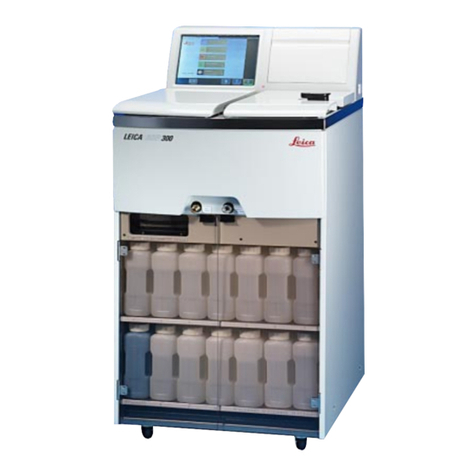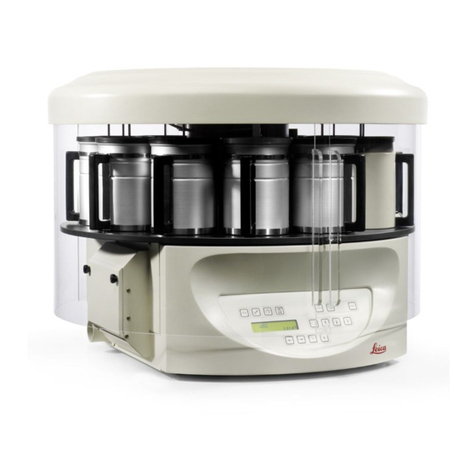5
ASP6025 Tissue Processor
Table of Contents
4.7 Touchscreen functions ........................................................................................................................................... 61
4.8 Switching o the instrument correctly .................................................................................................................. 65
5. Operation ............................................................................................................................... 66
5.1 System conguration - conguring the instrument parameters ........................................................................... 66
5.1.1 The Installation menu............................................................................................................................................ 66
5.1.2 System settings ..................................................................................................................................................... 69
5.1.3 User proles .......................................................................................................................................................... 78
5.1.4 The System monitor menu .................................................................................................................................... 80
5.1.5 The Service functions menu................................................................................................................................... 82
5.1.6 System status ........................................................................................................................................................ 84
5.1.7 The Run log ........................................................................................................................................................... 87
5.1.8 The Eternal error log.............................................................................................................................................. 89
5.1.9 Saving or loading data........................................................................................................................................... 90
5.1.10 The Smart Screen .................................................................................................................................................. 95
5.2 Reagents ............................................................................................................................................................... 98
5.2.1 Editing the reagent list.......................................................................................................................................... 98
5.2.2 The RMS system - adjusting warning threshold values........................................................................................ 100
5.2.3 The reagent status............................................................................................................................................... 104
5.2.4 Conguring the stations...................................................................................................................................... 106
5.2.5 The Reagent groups menu................................................................................................................................... 107
5.2.6 Ethanol rotation .................................................................................................................................................. 108
5.2.7 Adjusting the threshold value for ethanol rotation.............................................................................................. 111
5.2.8 Replacing xylene ................................................................................................................................................. 112
5.3 Inltration programs........................................................................................................................................... 113
5.3.1 Display of the program list................................................................................................................................... 113
5.3.2 Adding and modifying programs......................................................................................................................... 114
5.4 Reagent handling................................................................................................................................................ 117
5.4.1 Filling/draining reagents..................................................................................................................................... 117
5.4.2 Relling paran ................................................................................................................................................. 123
5.4.3 Draining a paran bath ...................................................................................................................................... 125
5.5 Running programs............................................................................................................................................... 127
5.5.1 User-dened programs ....................................................................................................................................... 127
5.5.2 Favorites.............................................................................................................................................................. 128
5.5.3 Dening Favorite programs ................................................................................................................................. 129
5.5.4 Starting a program.............................................................................................................................................. 132
5.5.5 Ending a program................................................................................................................................................ 136
5.6 Permanently installed inltration programs........................................................................................................ 137






























